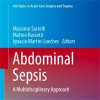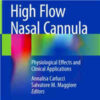Effect of a Resuscitation Strategy Targeting Peripheral Perfusion Status vs Serum Lactate Levels on 28-Day Mortality Among Patients With Septic Shock
jamanetwork.com
Among patients with septic shock, a resuscitation strategy targeting normalization of capillary refill time, compared with a strategy targeting serum lactate levels, did not reduce all-cause 28-day mortality. Among 424 patients randomized, 416 (98%) completed the trial. By day 28, 74 patients (34.9%) in the peripheral perfusion group and 92 patients (43.4%) in the lactate group had died. he primary outcome was all-cause mortality at 28 days. Secondary outcomes were organ dysfunction at 72 hours after randomization, as assessed by Sequential Organ Failure Assessment (SOFA) score; death within 90 days; mechanical ventilation–, renal replacement therapy–, and vasopressor-free days within 28 days; intensive care unit and hospital length of stay.














